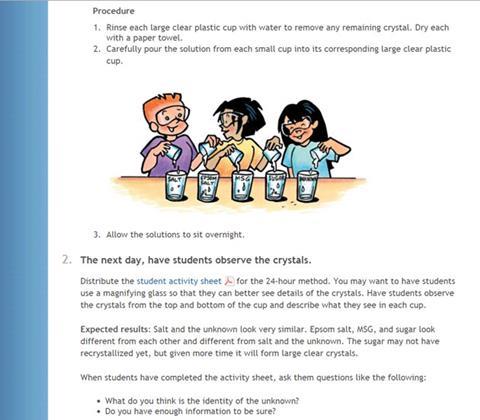Web watch with Trevor Critchley

This extensive website grew from a 470-page book published by the American Chemical Society. It includes practical activities and background material to help chemistry teachers take an inquiry-based approach in their classroom. The book itself can be freely downloaded on the site.
The authors are K–8 teachers, and my first impression is that this is aimed at KS2–KS3 classes. However, the topics are covered in sufficient conceptual depth that some parts may be suitable for GCSE or A-level.
There are two main sections. The first, chemistry review, covers the background science with concise but informative slides, including several well-made animations that can be downloaded separately. The emphasis, both here and in the class activities, relates to the chemistry of water: bonding, polarity, how ionic substances dissolve, surface tension, density and why things float or sink. There is a slightly jumbled chapter on chemical change, ranging from making red cabbage indicator to calculations using average bond enthalpies. All good stuff, but perhaps a little disjointed compared with the thematic feel of the rest.
The class activities section is firmly aimed at a younger audience, beginning with an investigation of why the outer coating of a sugar sweet dissolves and spreads out when water is added. The activities are worth a look because they are tremendously well-resourced. They have clear lesson sequences outlined on the main experiment page, a student activity sheet with a contextual background, additional background science and context-based material, and some challenging extension questions.
Variables and experimental design are covered well, and I would promote this website to primary teachers looking to build these skills into their curriculum. Many activities require only a few everyday materials, so would be easy to set up. The background science is there to help a non-specialist feel confident in their own understanding. I find myself recommending that whatever age your students – from KS2 to A-level – you should bookmark this website and set aside some time to explore it.









No comments yet